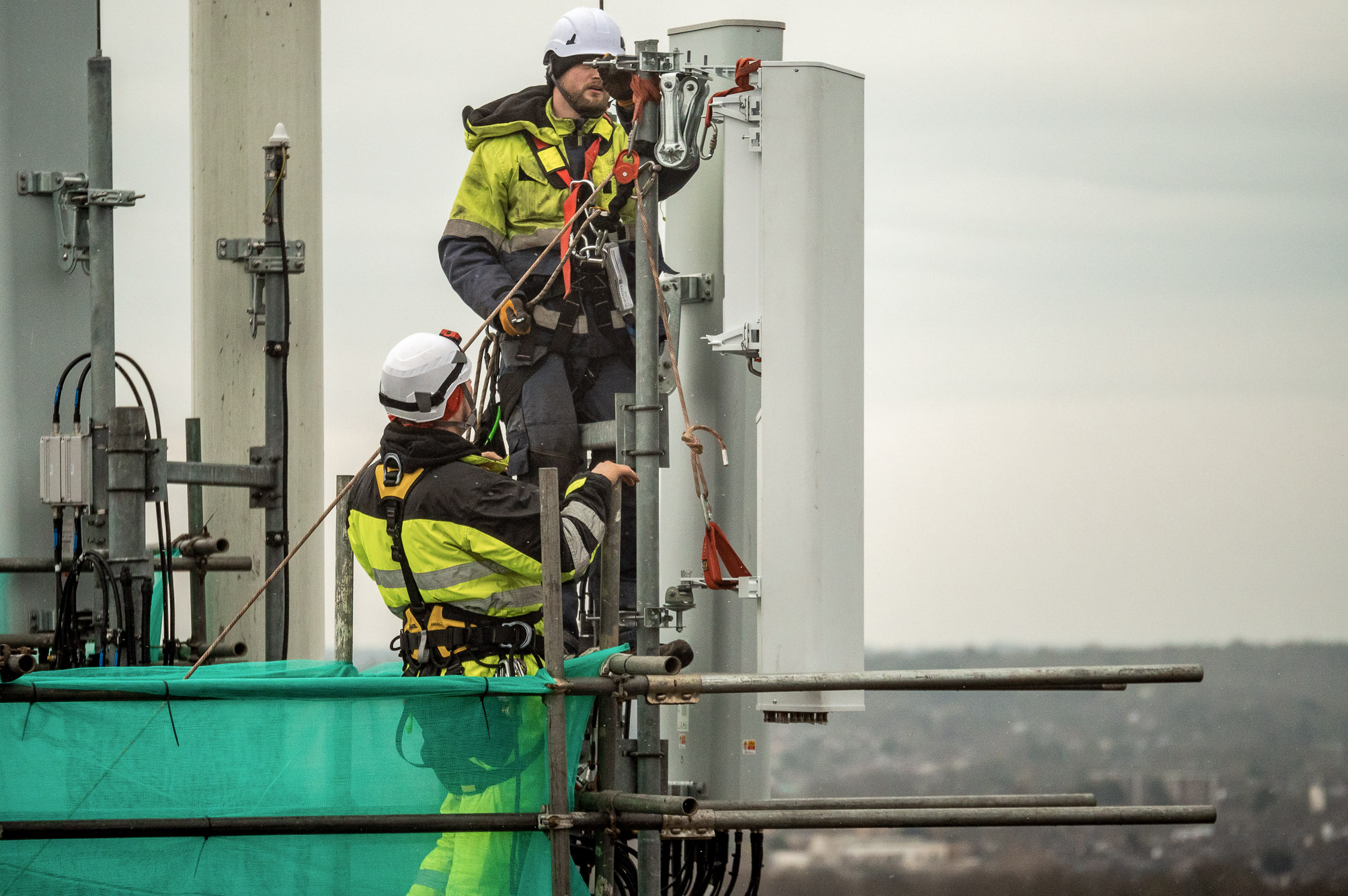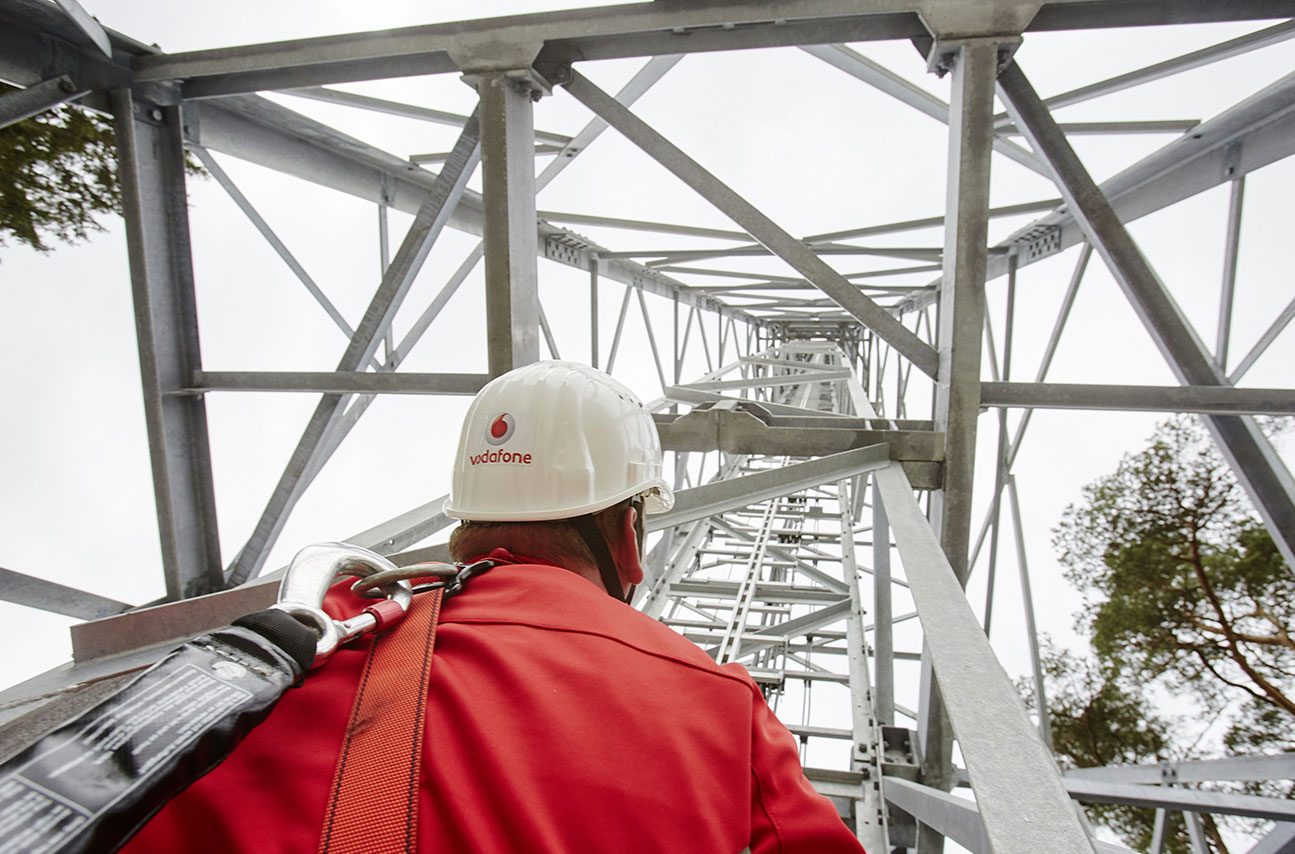An innovative new antenna design promises improved reliability, coverage and speed – especially when partnered with Vodafone’s 5G roll-out plan for the UK.
Vodafone has begun rolling out Ericsson’s new compact antenna to bring greater 5G capacity, coverage and performance to locations across the UK, without increasing the footprint of the average mast.
Ericsson’s latest design, the Interleaved AIR 3218, combines a radio unit and an antenna in a single unit, delivering increased 5G capacity in a smaller site footprint than previous designs. It can also transmit mobile data over all of the radio frequencies that Vodafone currently uses in the UK, without needing additional antenna units as with previous models. This combined multiband, Massive MIMO design makes it easier for Vodafone to add more performance and capacity to a mast without increasing its footprint.
Mobile phone masts: Everything you need to know
Finding suitable sites, securing planning permission, and building mobile phone masts is more of a tricky and time-consuming business than you may have realised. Our Q&A explains why.
The combination of what had been two separate components, radio and antenna, into a single unit allows for easier mounting on rooftops, towers, walls and poles. This simplifies network site upgrades and installations, helping to speed up the roll-out of 5G in areas previously constrained by building regulations or planning law.
Combining equipment in this way can also help improve the design of a site. As there is limited space on a mobile mast for installing equipment, designers must also consider factors such as structural integrity – how much weight can a mast can safely sustain, especially in windy conditions.
Vodafone is using AR 3218 units with its 900MHz, 3.4GHz and 3.6GHz 5G frequencies, which have been carefully selected to meet the increasing demand for mobile data while also improving network efficiency. Those frequencies are already licensed for use in the UK.
The Interleaved AIR 3218 is powered by the latest Ericsson Silicon processor which enables both high performance and energy efficiency. Compared to 4G, it can do more with less – transmitting more gigabytes of data for each watt of energy used (Gbytes/Watt). The integrated design uses energy more efficiently than two separate pieces of equipment. Energy usage is a critically important design consideration for Vodafone engineers, as the company’s network is responsible for the majority of Vodafone’s annual energy consumption.
A basic guide to Vodafone UK’s network
Vodafone UK's high-speed network is state-of-the-art, the result of billions in investment over the last five years. But how do all the parts fit together?
Ker Anderson, Head of Radio and Performance, Vodafone UK, said: “5G is the UK’s digital future, but we should never underestimate how difficult it is to deliver a future-proofed network at scale across the length and breadth of the UK.
“Working in partnership with Ericsson, we are constantly exploring new ways to accelerate this transformation, and this is another example of where innovation is delivered through collaboration.”
Vodafone and Ericsson introduce drone surveys to speed up network upgrades
The two companies are working together to trial the use of drones and Lidar-based 3D technology to speed up network planning and site upgrades.
Evangelia Tzifa, Chief Technology Officer, Networks & Managed Services, Ericsson UK & Ireland, said: “This is a gamechanger for Vodafone and for the UK deployment of 5G Massive MIMO. Together, we are increasing 5G capacity without growing visual antenna footprint on site.
“By being able to do more with less we are bringing the benefits of next-generation connectivity to more people in the UK, but also reducing any impact on the environment and continuing our journey to break the energy curve”.
Stay up-to-date with the very latest news from Vodafone by following us on Twitter and LinkedIn and signing up for News Centre website notifications.
Merger of Vodafone UK and Three UK to create one of Europe's leading 5G networks
Vodafone Group and CH Hutchison Group Telecom Holdings Ltd., owner of Three UK, have agreed to combine their UK businesses.


![crowd-at-the-concert[Adobe_Stock] stock photo of a crowd of people holding up their phones at a concert](https://www.vodafone.co.uk/newscentre/wp-content/uploads/2023/06/crowd-at-the-concertAdobe_Stock.jpg)


